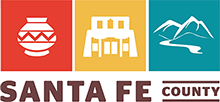*Suggestions taken from the NM Dept. of Homeland Security and Emergency Management - NM Family Emergency Preparedness Guide.
1. What Type of Disasters Could Happen to You?
- What types of disasters are most likely to happen in your area?
- Does your community have a warning signal? What does it sound like and what should you do when you hear it?
- Find out which radio stations will provide emergency information for your area.
2. Create a Disaster Plan
- Meet with your family and discuss why you need to prepare for disasters.
- Discuss the types of disasters that could happen and explain what to do in each case.
- Make two evacuation plans- one specific to your home and another if you entire neighborhood is affected.
- Have an action plan for your pets.
- Contact an out of area relative or fried to be your "family contact". Explain to them their responsibility.
- Family Communication Plan: print out these cards and give a copy to each family member so they know what to do in case of an emergency.
3. Put Your Plan Into Action
-
- Post emergency telephone numbers by all telephones.
- Teach children how and when to call 911 for help.
- Create your home emergency supply kit.
- Find safe spots in your home for each type of disaster.
- Determine the best escape routes from your home - find two ways out of each room.
- Make sure you have smoke detectors on each level of your home, especially near bedrooms.
- Make sure you have a Class ABC fire extinguisher.
- Check for adequate insurance coverage.
- Take photos or videotape your belongings and your home.
- Take a first aid and CPR class.
4. Keeping Your Plan Current
- Practice, practice, practice- review your plan once a month.
- Conduct fire and emergency evacuation drills at least twice a year.
- Test and recharge your fire extinguishers according to the manufacturer's instructions.
- Test your smoke detectors monthly - change the batteries every six months. (Like when the time changes)
- Replace emergency supply kit stored water and food every six months.
